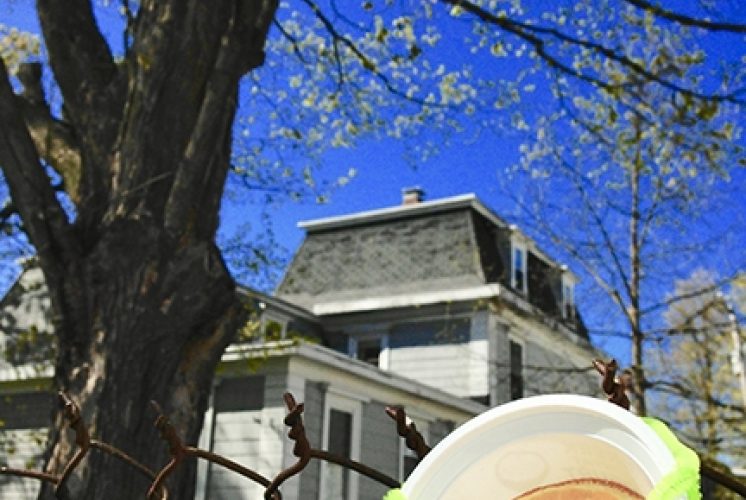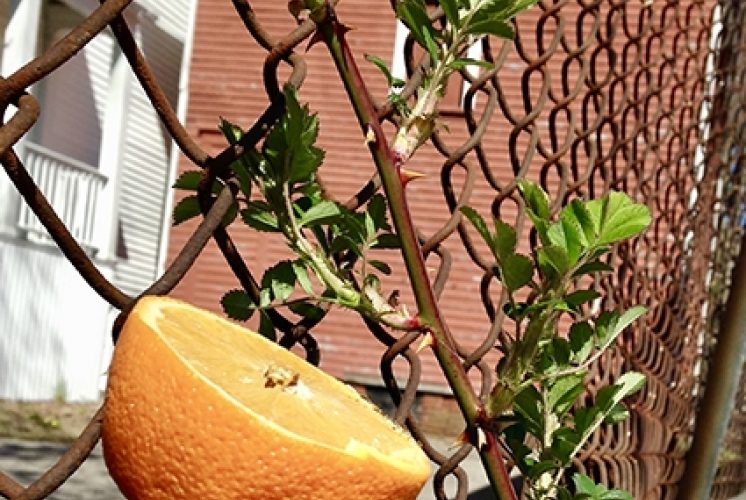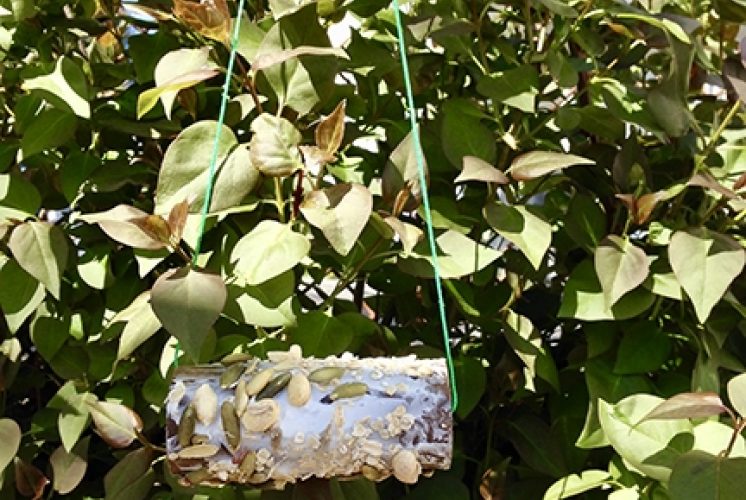Backyard Birding- Make a Bird Feeder
By Colie Haahr, CMNH Educator
Backyard birding is a great way for kids to practice making observations, and to learn about ecology and biology! Learn how to make 2 easy bird feeders to attract special birds to your yard, especially Orioles, who like oranges and other fruits.
If you have not tried backyard birding before, there are a few things to think about before you start. First, setting expectations for seeing birds. Even if you do a great job setting up a feeder with food that birds like, you may not see birds right away, or draw in unique birds right away. It’s a good idea to let kids know they may not see birds as soon as the feeder goes out. When scientists do research, they do a lot of observation and patient waiting to see results!
The food you provide is important, too, and birds need water! It may take some time to establish your backyard as a consistent food source for birds, so don’t give up if birds do not appear right away. All animals need water, so if you are able to provide clean water for your backyard animal friends, then you may see more of them more often. Birds do not have hands, obviously, so they use their beaks for many different things the way we use our hands. Different birds have different beaks that are adapted to where they live and what they eat. There’s a great book called Beaks! by Sneed B. Collard III that helps to illustrate this to kids. When you put out food for the birds keep in mind not only what they eat, but how they eat it and whether they can access it with their beaks.
Something else to keep in mind is the season. Some birds are only going to be around for a few months of the year because of migration, and others will be around throughout the year. Some birds migrate, or move, to warmer areas for the winter so that they can find more food. Migrating is a behavioral adaptation, or change in behavior, that helps an animal to survive. Some foods are harder for birds to find in the winter, like insects and fruits. The temperature gets too cold for some birds, but surprisingly many birds can withstand very cold winter temperatures. Spring is a great time to observe birds, and you may even get to see some nests being built.
Location is important, too. If there is not a lot of natural habitat near your backyard, you may see fewer bird species. To see “new” or special birds, you can try visiting their habitat, like a local conservation area. The Bellamy Preserve in Dover is a great place to see birds, and since there are open fields as well as the bay nearby, you can see shore birds and forest birds on the same trip. Ideal bird habitats may also be ideal tick habitats, so be mindful of your clothing choices, and in the springtime boots will be necessary for the mud.
Finally, bird identification can be really tricky even for grown ups! Instead of focusing strictly on bird identification, try setting up an observation chart that kids can use independently. This chart can include the day, time, number of birds, and what the bird was doing. For example, at lunch time Sally Scientist saw one bird that was hopping, and three birds that were flying. She didn’t see any birds that were eating or drinking, so they must not have known it was lunch time. All silliness aside, noticing whether animals eat when people eat is a great observation! A chart that kids can check off might work well:
Sally Scientist’s Observations:
Day/Time | Birds Hopping | Birds Flying | Birds Eating | Birds Drinking |
Monday lunch | / | /// | 0 | 0 |
Making the Bird Feeders:
In the video you will see 2 different ways to make a bird feeder. One style of feeder is made by adding seeds to a paper towel roll or a pine cone, and it is a little messy, but can be done outdoors to cut down on spills. The second style of feeder is made by using an orange as the food rather than bird seed, and this is done to attract Orioles because they like to eat fruit. This can be done by carefully attaching an orange half to a branch, or creating a small feeder that fits an orange inside of it, and has a perch for the birds to sit on while they eat.
Materials Needed:
- Oranges
- Seeds
- Paper towel tube
- Peanut butter, sun butter or crisco
- String
- Pipe cleaners
- Hole punch
- Small jar or yogurt cup
- Stick for a perch (sturdy)
- Optional: jelly - this can be messy, and less messy oranges work well!
Directions:
- Tube Feeder: The first feeder design is simple, but can be a little messy. For this feeder, you will need nut butter or crisco, a paper towel tube, string, and bird seed
- Use a tray or plate to hold the bird seed (a small mound should work)
- Cut a paper towel tub in half so that one tube makes two feeders
- Carefully add nut butter or crisco to the outside of the paper towel tube.
- Once the tube is mostly covered, gently roll it in the birdseed. The birdseed will stick to the tube, but keep it on a work surface like a plate until it’s time to hang it up
- Use a string to hang up your feeder by threading it through the tub and tying the two ends in a knot. Hang your feeder up in a tree
- Orange Feeder: For this feeder, you need an orange cut in half, sticks, a container, hole punch, and string to hang it up. The orange feeder is designed to attract Orioles because they enjoy eating fruit, especially oranges! Orioles also like jelly (not jam), but it is a little stickier and messier, so we suggest trying oranges first.
- First, cut the orange in half so that the birds can get to it
- The easiest way to make an Oriole feeder with oranges is to use a sturdy branch and poke the orange half directly onto a tree
- Another method is to use a small container, like a yogurt cup, to hold the orange. Use a stick to add a perch, add holes with a hole puncher, and use a pipe cleaner or string to hang it up.
Links:
https://www.allaboutbirds.org/news/types-of-bird-seed-a-quick-guide/?pid=1142
https://www.audubon.org/news/make-orange-feeder-orioles
https://www.allaboutbirds.org/guide/Baltimore_Oriole/lifehistory
https://feederwatch.org/blog/one-peanut-can-go-a-long-way-for-a-carolina-wren/






